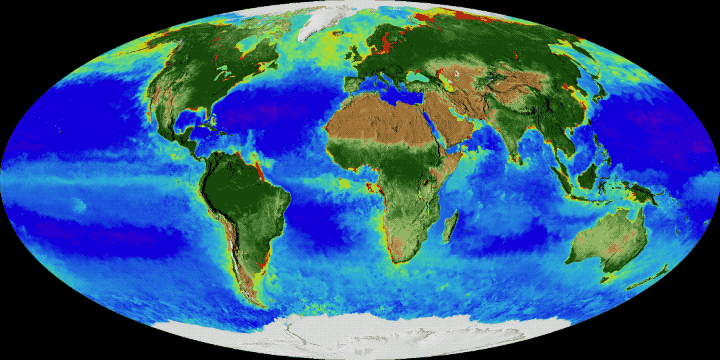
Cosmic rays raining down from exploded stars and variations in the Sun's magnetic activity can affect climate on Earth, claims a study.
These high-energy particles can influence the formation and growth of cloud condensation nuclei -- the seeds necessary for forming clouds in the atmosphere, showed the study published in the journal Nature Communications.
Since clouds are essential for the amount of solar energy reaching the surface of Earth, the implications of the study can be significant for our understanding of why climate has varied in the past and also for future climate changes.
"Finally we have the last piece of the puzzle explaining how particles from space affect climate on Earth," said lead author of the study Henrik Svensmark from the Technical University of Denmark.
"It gives an understanding of how changes caused by solar activity or by supernova (explosion of a star) activity can change climate," Svensmark said.
For the study, the researchers looked into the effects of cosmic rays on a simulation of Earth's atmosphere, which was recreated inside a cloud chamber -- a sealed lab which mirrors the pressure and moisture of the upper atmosphere, The Telegraph reported.
Data was taken over a period of two years.
The study showed that high-energy particles from exploded stars knock electrons out of air molecules. This produces ions -- positive and negative molecules in the atmosphere.
The ions help aerosols -- clusters of mainly sulphuric acid and water molecules -- to form and become stable against evaporation.
This process is called nucleation. The small aerosols need to grow nearly a million times in mass in order to have an effect on clouds.
The second role of ions is that they accelerate the growth of the small aerosols into cloud condensation nuclei -- seeds on which liquid water droplets form to make clouds.
The study also showed that variations in the Sun's magnetic activity alter the influx of cosmic rays to the Earth.
When the Sun is lazy, magnetically speaking, there are more cosmic rays and more low clouds, and the world is cooler as low clouds made with liquid water droplets cool the Earth's surface.
When the Sun is active, fewer cosmic rays reach the Earth and, with fewer low clouds, the world warms up, the findings showed.
The researchers said that the Medieval Warm Period around year 1000 AD and the cold period in the Little Ice Age between 1300 AD-1900 AD both fit with changes in solar activity.
The implications of the study suggests that cosmic rays coupled with activities of the Sun may have affected the climate changes observed during the 20th century as well.









